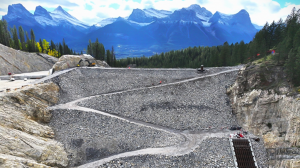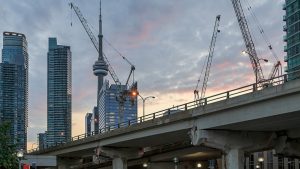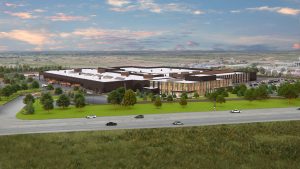At first glance, it might appear the future of construction equipment and vehicles lies with EVs. This might not be as straightforward as many believe.
On the positive side are numerous announcements from both established and upstart vehicle manufacturers. New model pick-ups are ready to hit the road in 2022.
For example, Ford is expected to ship its 2.5 litre Maverick Hybrid to pre-booked customers in January. The Maverick claims a combined city and highway mileage of 37 miles per U.S. gallon, which Ford says is better than a four-cylinder, 1.5 litre 2022 Honda Civic.
Meanwhile, more than 120,000 customers are waiting for their electric Ford F-150 Lightning to arrive. The Lightning packs more power than the Maverick Hybrid, with 563 horsepower, a 2000-pound payload and a 10,000-pound towing capacity.
General Motors will debut its Electric Silverado pick up at the Consumer Electronics Show in January. There’s no announcement on price, but its full-charge range is said to be 400 miles.
There are several other electric pickup vehicles in the works, from the likes of GMC’s Hummer division and start-ups like Rivian and Lordstown. Of course, Tesla’s Cybertruck is scheduled for a fall 2022 release, with claims to beat the F-150 in some load-hauling and driving range categories.
However, all this positive news regarding smaller, GHG-reducing EV pick-ups is balanced by the good ol’ North American lust for carbon-spewing super-trucks. You can look forward to these monsters on the road in 2022.
Chevrolet has come up with “The Beast,” a 650 horsepower high performance truck featuring a 6.2 litre V-8 and 10-speed automatic transmission.
While construction work is not its prime purpose — GM says it’s designed for desert-running and crashing through natural terrain — it can certainly throw out a lot of carbon. Assuming 20,000 miles of 50/50 city and highway driving, The Beast produces approximately 862 metric tons of CO2, based on Chevrolet’s fuel consumption estimates.
Not to be outdone, Chrysler is excited about its new 2021 Ram 1500 TRX Rex Runner. It packs a 6.2 litre HEMI V-8 engine that pours out over 700 horsepower riding on 35-inch tires.
As for larger trucks capable of hauling big loads across the country, there’s discussion whether an electrified future is assured.
Several concept vehicle and rigs have been on the roads for some time, from leading commercial truck manufacturers like Kenworth, Mack and Navistar. All are attempting to deal with the challenges of reduced payload capacities resulting from being loaded down with massive storage batteries.
In fact, not everyone in the industry is convinced that heavy electric vehicles are ready to take over.
“Construction will be one of the last markets to go electric,” David Hillman, senior director of vocational marketing for Navistar told equipmentworld.com. “It will get there eventually, but not soon.”
The other issue beyond battery weight and effective range is the matter of recharging while in transit. Although some vehicles can be recharged at home when practical, there’s a need for a road-based recharging infrastructure network running coast-to-coast.
In the United States, the Joe Biden administration has committed to installing 500,000 recharging stations by 2030. In Canada, however, EV recharging is scattered.
There’s a federal commitment to establish, “a coast-to-coast network of fast chargers and installing chargers in more localized areas where Canadians live, work and play.”
However, according to Natural Resources Canada, there are currently less than 1,000 fast-charging stations in all of Canada.
Meanwhile, EV sales in Ontario are the lowest in the country, 3.0 per cent versus 13 per cent in B.C. The provincial government appears reluctant to change that any time soon.
After declaring, “I’m not going to give rebates to guys that are buying $100,000 cars — millionaires,” Premier Doug Ford then announced that each of the province’s 19 EnRoute stations on the east-west Highway 401 and on Highway 400 between Toronto and Barrie would have two EV fast-chargers by summer, a total commitment of only 40 chargers across 890 kilometres.
Don’t get too excited yet.
John Bleasby is a Coldwater, Ont.-based freelance writer. Send comments and Inside Innovation column ideas to editor@dailycommercialnews.com.










Recent Comments
comments for this post are closed